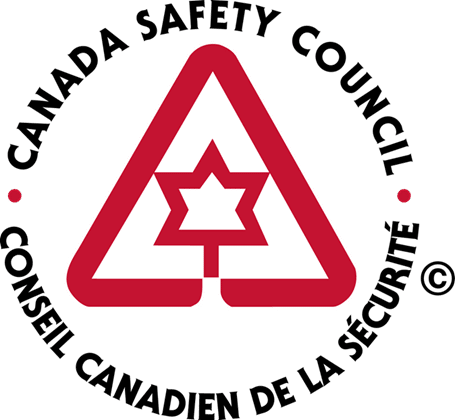Understanding Cold Weather Risks
Mastering the Cold: A Survival Guide
Discover essential strategies to protect yourself from the harsh effects of cold weather. Learn how to prevent heat loss and stay safe in freezing conditions.
Winter in Canada is breathtakingly beautiful—but also dangerously cold if you’re not prepared. Before we delve into cold related injuries and how to prevent them, it’s important to cover how people lose heat.
As a rule, heat always seeks equilibrium, meaning if your body is warmer than its surroundings, you will experience cold as heat leaves your body.
There are four ways in which heat leaves our bodies:
How Heat Escapes the Body
Radiation
Radiation is when heat leaves our bodies through the air. It occurs when the air is colder than our internal temperature (+37°C or 98.6°F), at which point heat emits from our bodies.
Conduction
Conduction is when heat leaves our bodies through touch. The effects of conduction are greatly amplified when the body is wet, or in direct contact with cold water.
Convection
Your body naturally emits heat, which can be lost to the surrounding environment. Wearing layers helps trap this heat close to your body.
Evaporation
Evaporation is the loss of heat due to conversion of water into liquid or gas. For us, this includes sweating and breathing.
How to Stay Warm
Layer Up
Wear moisture-wicking base layers, insulating mid-layers, and a waterproof outer layer.
Protect your Extremities
Gloves, insulated boots, and a warm hat are essential.
Stay Dry
Wet clothing dramatically increases heat loss. Change out of wet clothing as soon as possible.
Keep Moving
Physical activity generates body heat—but be careful not to sweat too much, as damp clothing can make you colder.
Cold Stress Injuries and Illnesses
Signs and What to Do
Being exposed to cold may result in a variety of cold injuries and illnesses, with hypothermia and frostbite being the most immediately concerning.
Other types of cold stress injuries include chilblain (small patches of inflamed skin,) immersion/trench foot (a painful condition caused wet and cold feet for prolonged periods,) windburn and frostnip.
In this article, we will discuss frostbite and hypothermia, but feel free to consult our resources section for more information on other types of cold injuries.
Frostbite
Frostbite is the freezing of skin and tissues. It can cause permanent damage, and in severe cases can necessitate amputation. It commonly affects bodily extremities, such as fingers, toes, ears, and the nose. Risk factors for frostbite include not being dressed properly for extremely cold temperatures and people who suffer from reduced blood circulation.
Signs of Frostbite:
-
- Numbness or tingling sensations
- Skin that appears pale, grayish, or waxy
- Hard and frozen skin
- Blisters in more severe cases
What to Do:
-
- Move to a warmer place as soon as possible.
- Gently warm the affected area by soaking it in warm (not hot) water, ideally between 37-40°C (99-104°F).
- AVOID rubbing the area or applying direct heat, as this can cause further skin damage.
- Keep the area elevated and covered.
- Seek medical attention.
Hypothermia
Hypothermia occurs when exposed to cold temperatures for long periods without adequate clothing. It occurs when the body loses heat faster than it can generate it, causing our core internal temperature to drop below 35°C (95°F). This can happen quickly, especially in wet conditions or freezing water, and can become life-threatening if not addressed.
Signs of Hypothermia:
-
- Uncontrollable shivering (may stop in severe cases)
- Slurred speech and confusion
- Fatigue and drowsiness
- Weak pulse and slow breathing
- Clumsiness and poor coordination
- Loss of consciousness in extreme cases
What to Do:
-
- Hypothermia is a medical emergency. At the first sign, seek medical help immediately.
- Get the person to a warm, dry place as soon as possible.
- Remove any wet clothing and replace it with warm, dry layers.
- Offer warm, non-alcoholic, non-caffeinated drinks if they are alert.
- Apply warm compresses to the chest, neck, and groin to gradually raise body temperature.
By staying informed and taking simple precautions, you can keep yourself and others safe in cold weather. Winter is meant to be enjoyed—so bundle up, stay warm, and take care!
Additional Resources
For in-depth information and official guidance on cold-weather safety, check out:
-
-
- Canadian Centre for Occupational Health and Safety: https://www.ccohs.ca/oshanswers/phys_agents/cold/cold_health.html
- University of Toronto: https://ehs.utoronto.ca/wp-content/uploads/2015/10/Cold-Stress.pdf
- Canadian Red Cross: https://www.redcross.ca/training-and-certification/first-aid-tips-and-resources/first-aid-tips/cold-related-emergencies-staying-warm-and-safe-in-canadian-winters
- Infrastructure Health & Safety Association: https://www.ihsa.ca/IHSA-Health-Safety-Magazine/IHSAV242/Give-cold-stress-the-cold-shoulder.aspx
-




